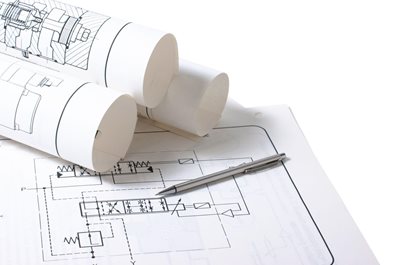Open and Closed Circuit Hydraulic Pump Systems 101
 If you are familiar with hydraulic systems, two common hydraulic circuits used are open loop and closed loop. Each type of circuit has its advantages and disadvantages. Understanding the difference between open loop vs. closed loop hydraulic circuits is essential to ensure you are using the best circuit design for your hydraulic system.
If you are familiar with hydraulic systems, two common hydraulic circuits used are open loop and closed loop. Each type of circuit has its advantages and disadvantages. Understanding the difference between open loop vs. closed loop hydraulic circuits is essential to ensure you are using the best circuit design for your hydraulic system.
What Is an Open Loop Hydraulic Circuit?
An open loop circuit is where the inlet to the hydraulic pump and the return flow on the hydraulic motor or actuator are connected to the hydraulic fluid reservoir. The pump supplies a continuous flow of fluid through the system. This type of circuit often includes using directional
control valves to regulate the flow and system pressure to actuators.
Advantages of an Open Loop Circuit
- Ideal for hydraulic systems that operate at lower pressures
- System runs cooler since heat is dissipated in the reservoir
- Can use multiple control valves in a series
- Provides more flexibility in system design
- Reduced risk of fluid contamination
- Only option for circuits that contain actuators other than motors
- Cost less to configure and design
- Easier to maintain
Disadvantages of an Open Loop Circuit
- Fluid reservoir must be large enough to allow for proper fluid cooling
- Hydraulic system could generate excessive heat if the reservoir is too small
- Complex open loop systems can be more challenging to troubleshoot problems
What Is a Closed Loop Hydraulic Circuit?
A closed loop circuit system for
hydraulic pumps is also called a hydrostatic drive. The fluid flows in a closed circuit through a piston pump, and then the motor, and it is returned to the piston pump without passing through the reservoir.
There is often a pressure control relief valve where hot fluid can escape when needed. Most closed loop circuits also use a gear pump as a charge pump to draw cooler fluid from the reservoir, to make up for case drain leakage, directly into the piston pump.

- Well-suited for drive applications and hydrostatic transmissions
- Works well with higher pressures and pumps
- Systems run at much higher pressures than most
- Less fluid required; majority of fluid contained inside
- Direction of can be reversed
- Lost fluid is replaced by fluid supplied to the main pump via the charge pump
- Allows system designers more flexibility in designing system controls
- Provides precise motor control in a light-weight, compact design
Disadvantages of a Closed Loop Circuit
- Operates at a higher operating temperature
- Higher risk of fluid contamination
- Costs more to configure and design
- High-pressure hydraulic fluid filtration necessary
Which Circuit Is the Best?
Deciding which hydraulic pump circuit system is best depends on the system design and its intended functions. An open loop pump configuration is best for systems that will be supplying non motor actuators such as cylinders or rotators. Conversely, closed loop systems can be better for wheel and track drive motors on mobile machines and mobile equipment.
There are also hybrid circuit systems that use both open loop and closed loop circuits. For
further assistance or help to decide whether open loop vs. closed loop hydraulic systems are best for your application, please feel free to contact White House Products, Ltd. at +44 (0) 1475 742500 today!
Back to blog posts